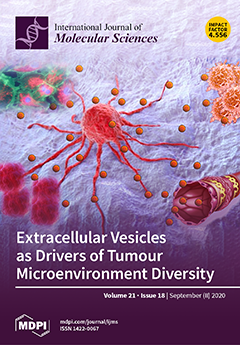Carotid paragangliomas (CPGLs) are rare neuroendocrine tumors often associated with mutations in
SDHx genes. The immunohistochemistry of succinate dehydrogenase (SDH) subunits has been considered a useful instrument for the prediction of
SDHx mutations in paragangliomas/pheochromocytomas. We compared the mutation status of
SDHx genes
[...] Read more.
Carotid paragangliomas (CPGLs) are rare neuroendocrine tumors often associated with mutations in
SDHx genes. The immunohistochemistry of succinate dehydrogenase (SDH) subunits has been considered a useful instrument for the prediction of
SDHx mutations in paragangliomas/pheochromocytomas. We compared the mutation status of
SDHx genes with the immunohistochemical (IHC) staining of SDH subunits in CPGLs. To identify pathogenic/likely pathogenic variants in
SDHx genes, exome sequencing data analysis among 42 CPGL patients was performed. IHC staining of SDH subunits was carried out for all CPGLs studied. We encountered
SDHx variants in 38% (16/42) of the cases in
SDHx genes. IHC showed negative (5/15) or weak diffuse (10/15) SDHB staining in most tumors with variants in any of
SDHx (94%, 15/16). In
SDHA-mutated CPGL, SDHA expression was completely absent and weak diffuse SDHB staining was detected. Positive immunoreactivity for all SDH subunits was found in one case with a variant in
SDHD. Notably, CPGL samples without variants in
SDHx also demonstrated negative (2/11) or weak diffuse (9/11) SDHB staining (42%, 11/26). Obtained results indicate that SDH immunohistochemistry does not fully reflect the presence of mutations in the genes; diagnostic effectiveness of this method was 71%. However, given the high sensitivity of SDHB immunohistochemistry, it could be used for initial identifications of patients potentially carrying
SDHx mutations for recommendation of genetic testing.
Full article






